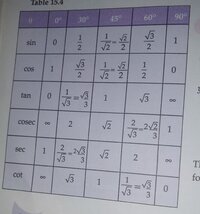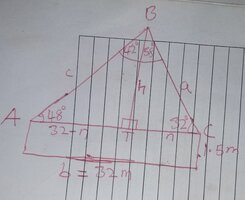The Highlander
Senior Member
- Joined
- Feb 18, 2022
- Messages
- 1,203
That is precisely why I advocated the much simpler (more straightforward) approach of using the Sine Rule to (directly) calculate "h", followed by basic R-A Trig to get the boys' distances from the tree via the Tangents of the given angles but @chijioke appears to "enjoy(?)" making things difficult (for himself)! ?If you have gone through the steps of #18 you will see that statement above (derived by is incorrect.
(I wasn't about to waste any time ploughing through his (convoluted) algebraic manipulations to verify them; I will leave that in your very capable hands. ?)


